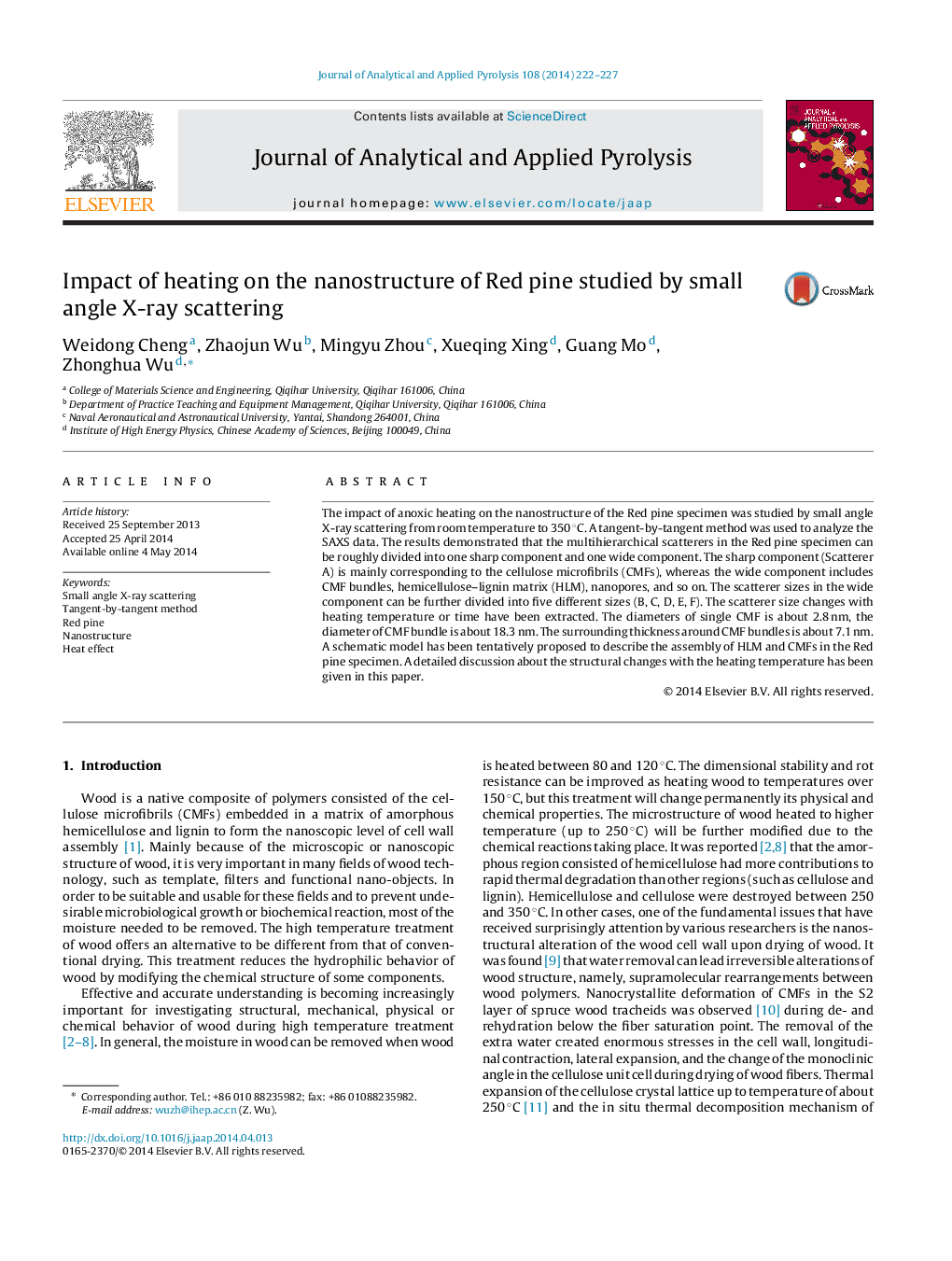| Article ID | Journal | Published Year | Pages | File Type |
|---|---|---|---|---|
| 1196679 | Journal of Analytical and Applied Pyrolysis | 2014 | 6 Pages |
•The six multihierarchical scatterers in the nanostructures of Red pine specimen had evolutions respectively.•A schematic model was tentatively proposed as a basic assembly mode of CMF bundles and HLM.•The hemicellulose was testified to involve inside the CMF bundles by the SAXS method.•The pores, cavities and microcracks made a great contribution to the thermal expansion behavior of the specimen.
The impact of anoxic heating on the nanostructure of the Red pine specimen was studied by small angle X-ray scattering from room temperature to 350 °C. A tangent-by-tangent method was used to analyze the SAXS data. The results demonstrated that the multihierarchical scatterers in the Red pine specimen can be roughly divided into one sharp component and one wide component. The sharp component (Scatterer A) is mainly corresponding to the cellulose microfibrils (CMFs), whereas the wide component includes CMF bundles, hemicellulose–lignin matrix (HLM), nanopores, and so on. The scatterer sizes in the wide component can be further divided into five different sizes (B, C, D, E, F). The scatterer size changes with heating temperature or time have been extracted. The diameters of single CMF is about 2.8 nm, the diameter of CMF bundle is about 18.3 nm. The surrounding thickness around CMF bundles is about 7.1 nm. A schematic model has been tentatively proposed to describe the assembly of HLM and CMFs in the Red pine specimen. A detailed discussion about the structural changes with the heating temperature has been given in this paper.
